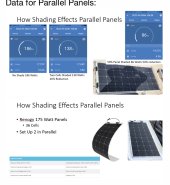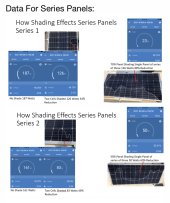200/460 = 43% of full power
7/8 = 88% of full power
If MPPT functions well, there is a bypass diode, and 7s Vmp is enough, that should operate at 88% not 43%.
That would be up by 45% (of full power) or up 100% (depending on what you compare to.)
An increase of 15% *might* be due to improved efficiency at lower voltage (closer to AC Vpeak after whatever transformer) but Sunny Boys according to their published curves only roll off a few percent.
Doesn't mean it didn't happen, but seems like something not working right. Some bad diodes would be one possibility.
We had a guy come pitch optimizers to our manufacturing company almost 20 years ago. That's when I ran the experiment of shading one panel out of 9s2p (Sharp 165W polysilicon into SWR 2500U). There were varying clouds so it was not a well controlled experiment, but reduction in power was about 1/18th, not 2/18th or 9/18th.
MPPT getting stuck is certainly a thing, but not expected with your 12s. Every few minutes Sunny Boy will do a sweep to see if lower voltage gets full current, rather than partial current from what light hit that panel. Not real frequent so would take patience. My 9s2p, following curve would find shifted peak, no need for a sweep. Half-cut panels, which are more like (20s2p3s)12s (if 120 half-cells and array is 12 panels) would have multiple peaks.
Maybe today I'll run more experiments. But it is overcast.





